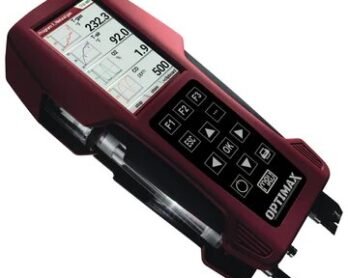Landtec Gem 5000 stands at the forefront of gas detection technology, playing a pivotal role in safeguarding industrial environments and ensuring the well-being of workers. In this comprehensive guide, we delve into the intricate science behind Landtec Gem 5000, unraveling the complexities of gas detection, its applications, and the critical role it plays in maintaining a safe and secure workplace environment. From the underlying principles to the advanced features that set it apart, let’s explore the science that powers Landtec Gem 5000 and its significance in the realm of industrial safety for the discerning USA audience.
The Fundamentals of Gas Detection:
1. Gas Sensing Technologies:
- Catalytic Bead Sensors: Landtec Gem 5000 utilizes catalytic bead sensors, which detect the presence of combustible gases by measuring the heat generated during their combustion.
- Infrared Sensors: Infrared sensors are employed for non-combustible gases, relying on the absorption of infrared radiation to identify specific gases.
2. Detection Principles:
- Lel Measurement: Landtec Gem 5000 accurately measures the Lower Explosive Limit (LEL), indicating the minimum concentration of a combustible gas required for ignition.
- Concentration Levels: The device provides real-time data on gas concentration levels, enabling prompt response to potential hazards.
3. Response Time and Accuracy:
- Swift Response: The Landtec Gem 5000 is known for its rapid response time, providing instantaneous readings to ensure timely detection of gas leaks.
- High Accuracy: With precise sensors and advanced calibration features, the device delivers highly accurate measurements for diverse gas types.
Applications of Landtec Gem 5000:
1. Industrial Safety:
- Hazardous Areas: The device is crucial in industries where combustible gases pose a risk, such as petrochemical, manufacturing, and refining facilities.
- Worker Protection: By continuously monitoring gas levels, Landtec Gem 5000 contributes to creating a safer environment for workers.
2. Environmental Monitoring:
- Emissions Control: The device aids in monitoring gas emissions, helping industries adhere to environmental regulations and reduce their ecological footprint.
- Waste Management: Landtec Gem 5000 is employed in landfills to detect and manage methane emissions, a byproduct of decomposing organic waste.
3. Emergency Response:
- Early Warning Systems: In the event of a gas leak, Landtec Gem 5000 serves as an early warning system, allowing for prompt evacuation and response measures.
- First Responder Tool: Emergency response teams utilize the device to assess the situation and implement effective strategies during gas-related incidents.
Advanced Features of Landtec Gem 5000:
1. Data Logging and Storage:
- Continuous Monitoring: The device offers continuous monitoring and data logging capabilities, allowing for the recording of gas concentrations over time.
- Historical Analysis: Stored data enables historical analysis, aiding in identifying patterns and trends for proactive safety measures.
2. Wireless Connectivity:
- Remote Monitoring: With wireless connectivity options, Landtec Gem 5000 facilitates remote monitoring, enabling real-time data access from a centralized location.
- Integration with Systems: The device seamlessly integrates with industrial control systems for streamlined monitoring and management.
3. Intrinsically Safe Design:
- Certified Safety: Landtec Gem 5000 is designed to meet intrinsically safe standards, ensuring it can be safely used in potentially explosive atmospheres.
- Durable Construction: The device’s robust construction enhances durability, making it suitable for challenging industrial environments.
Best Practices for Landtec Gem 5000 Usage:
1. Regular Calibration:
- Calibration Schedule: Adhering to a regular calibration schedule ensures the accuracy of gas concentration measurements.
- Calibration Standards: Follow manufacturer-recommended calibration standards to maintain the device’s precision.
2. Periodic Maintenance:
- Sensor Inspection: Regularly inspect sensors for any signs of wear or damage, replacing them as needed to guarantee optimal performance.
- Battery Checks: Ensure the device’s power source, typically batteries, is in good condition to prevent downtime during critical operations.
3. Training and Awareness:
- User Training: Provide comprehensive training to personnel on the proper use and interpretation of Landtec Gem 5000 readings.
- Emergency Protocols: Establish clear emergency response protocols based on Landtec Gem 5000 alerts to enhance workplace safety.
Future Trends in Gas Detection Technology:
1. Integration with IoT:
- Internet of Things (IoT): The future may witness increased integration of Landtec Gem 5000 with IoT, allowing for enhanced connectivity and data analytics.
- Predictive Analytics: IoT integration may enable predictive analytics, anticipating potential gas-related issues based on historical data.
2. Artificial Intelligence (AI):
- AI Algorithms: Advanced AI algorithms may be employed to analyze gas concentration patterns, providing more sophisticated insights for preventive measures.
- Automated Response Systems: AI-driven systems could automate emergency response actions based on real-time data from Landtec Gem 5000.
3. Miniaturization and Portability:
- Compact Designs: Gas detection devices may become more compact and portable, offering greater flexibility in deployment.
- Personal Gas Detectors: Individualized, wearable gas detectors could become more prevalent, enhancing personal safety for workers in various industries.














